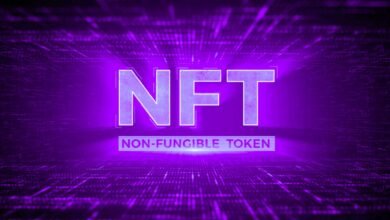
In the world of blockchain, have you heard about layer-0 blockchains and you are curious what they are? Are you searching for the best guide to learn more about layer-0 blockchain? Are you searching for the key features or the benefits of the layer of blockchain?
If yes! You have Chosen the right place for you, to know all about layer-0 blockchain.
Layer 0 of the blockchain network is the blockchain’s network first layer which allows seamless interaction with other protocols, to create interconnected value chains. If you want to know, what layer-0 blockchain is and how it is beneficial in the crypto world, don’t worry we are to solve all your queries related to it.
In this article, we will explore a brief introduction to layer-0 blockchain. You will learn here how it works and you will be provided with key features of layer-0 blockchain as well as the benefits of 0-layer blockchain. We will discuss the real-world applications of layer zero blockchain. Along with benefits, we will tell you about some limitations. In short! This article is going to be the best guide about layer-0 blockchains.
Scroll down to know all about Layer-0 blockchains!
What Are Layer-0 Blockchains?
The term layer-0 is used sometimes to refer to the blockchain’s system underlying protocol or infrastructural hardware layer which features software development tool kits that allow developers to build their proposed blockchain.
Layer-0 blockchain usually operates at the lowest level of the protocol stack and they provide the fundamental building bolls for the network. These blockchains usually define the basic rules for validating transactions, adding some rules to the chain, and distributing incentives to the participants of the network.
Layer-0 blockchain is very important to the blockchain as it provides a very high level of security as well as decentralization. So by implementing these consensus mechanisms, layer-0 blockchain ensures that no single entity can control the network which then prevents the censorship as well as the manipulation of transactions. These types of blockchains are considered very important to enable interoperability between different blockchain networks. They provide the common base layer on which layer 1 protocols or applications can be built, which then allows seamless communication and data exchange between layer 1 blockchains.
How Does A Layer-0 Protocol Work?
After knowing about what is layer-0 blockchain, you may be searching for how it works. Here you are going to learn, about its works. There are many ways in which layer-0 blockchain protocols operate and each of them differs from one another in its design, features, or focus. But generally, we can say that layer-0 protocols are the primary blockchains that are used in backing up transaction data from layer-1 chains. And there are clusters of layer 1 chains that are built on layer-0 protocols. Some cross-chain transfer protocols enable tokens and data to be transferred into different blockchains. Here we will provide you with some popular examples of layer-0 blockchains to clarify how they work.
Polkadot:
Polkadot was designed by the co-founder of Ethereum just to enable developers to create their blockchain. Each blockchain that is created on the Polkadot independently is known as a parallel chain or Parachain. And relay chain facilitates its users by providing efficient data communication between Parachain by acting as a bridge between them. It employs sharing, which is the process of dividing blockchains or different types of databases just to increase the efficiency of transaction processing. Proof-of-stake validation is utilized by the Polkadot to ensure the security of the network
Avalanche:
Avalanche usually utilizes a tri-blockchain infrastructure, consisting of main three chains which are; the contract chain, the exchange chain, and the platform chain. These three chains are configured just to handle the functions of key ecosystems to improve security while maintaining low latency. The X-chain is usually utilized for the creation as well as trading of assets, the C-chain is used for the creation of smart contracts, and the P-chain is used for the validator and subnet coordination. Its flexible structure enables inexpensive and rapid cross-chain exchanges.
Cosmos:
Cosmos network usually comprises Cosmos Hub PoS blockchain mainnet as well as zone-customized blockchains. Cosmos Hub is used to transfer assets and information between connected zones and it provides a shared security layer. Each zone is highly configurable which allows developers to create their cryptocurrency with individualized block-validation settings and some other important features. Inter-blockchain communication protocol is utilized by all the applications and servers that are hosted in these zones. It enables the exchange of assets as well as data across many independent blockchains.
Key Features Of Layer-0 Blockchain:
Layer-0 blockchain is no doubt the backbone of the blockchain ecosystem that’s why it is providing the foundational layer of security, scalability, and interoperability that makes the blockchain technology so powerful as well as transformative.
Here we will discuss the key features of Layer-0 blockchain!
Security:
Layer-0 blockchains are usually designed to a very secure along with strong encryption and cryptographic protocols just to protect the integrity of data on the chain. It is very important in financial and other applications that are very sensitive in case of data, and they require high data security.
Scalability:
Along with security, Layer-0 blockchains are designed to be highly scalable so that they can handle larger volumes of transactions. Some 0-layer blockchains like venom layer blockchain achieve scalability with the help of Sharding which involves the partition of the blockchain into smaller sub-chains known as shards.
Decentralization:
Layer-0 blockchains are usually decentralized which means that any single entity or organization doesn’t control them. this feature makes them highly resistant to censorship as well as tampering which then provides a greater level of transparency and trust in that system.
Flexibility:
Layer-0 blockchains are considered very flexible and they can be customized to suit specific use cases. Developers are allowed to build on the top of the base layer and create the applications and systems which can then be tailored to meet the needs of their participants or users.
Interoperability:
Layer-0 blockchains are designed to be interoperable along with other blockchains and systems which allows a very seamless transfer of assets and data between different platforms. It is achieved by using some common protocols and standards.
Applications Of 0-Layer Blockchain In The Real World:
Layer-0 blockchain has the greatest functionality which allows them to be used in different industries.
Here we will explore some real-world applications of the Layer-0 blockchain.
Decentralized Finance:
Decentralized finance is usually the rapidly growing sector whose aim is to create a financial system that is open, transparent, and it is accessible to everyone. The current generation of blockchain networks; such as Bitcoin and Ethereum are very limited in their capacity to process transactions which leads to high fees and very low transaction times.
Layer-0 blockchain is very helpful in reducing those limitations by increasing the speed as well the capacity of DeFi applications which enables faster and more efficient trading, lending, and other financial transactions.
Supply Chain Management:
Supply chain management is another area in which 0-layer blockchains create a very significant impact. By using a 0-layer blockchain, companies can enhance and improve the efficiency along with transparency of their supply chains which allows them to track the products more accurately and at the same time reduce the risk of fraud. One of the best examples of a Layer-0 blockchain that is specially designed for supply chain management is the VeChain. VeChain is very helpful to companies as they can track the movements of goods in real-time, verify the authenticity of the products and yes it also reduces the risk of fraud.
Gaming:
Gaming is very popular nowadays and it is also popular in the crypto world. Layer-0 blockchain also has a significant effect on blockchain gaming. Game developers are allowed to leverage the 0-layer blockchain to create decentralized gaming platforms for them. In this way! Players can trade in-game assets easily and securely. It is giving another shape to gaming.
Healthcare:
The healthcare industry usually requires very high technical efficiency and layer-0 blockchains can deliver significant impact. Layer-0 blockchains are considered very helpful in improving data security as well as the privacy of patents while enabling more efficient and faster data sharing between two different providers.
Identity Management:
Identity management is another area in which a 0-layer blockchain creates a significant impact. Here 0-layer blockchain allows participants to control their data and identities effectively while providing them the surety that their data is safe/secure and private. Another advantage that layer-0 blockchains provide users with is that Venom blockchain allows developers to combine public and private work chains to protect their security and privacy. Its application is in trade finance where the private work chain process stores confidential information such as data of clients, financial instruments, and transactions. It provides a very high level of confidentiality which is very important for the large and very complex deals in trade finance.
Challenges Or Limitations Of Layer-0 Blockchain:
Layer-0 blockchain offers many benefits to users but like other technologies, there are some limitations or challenges associated with it.
So you need to be familiar with them before using them!
Llayer-0 blockchains such as Venom face some challenges or Limitations that are very important to address just for widespread adoption. The main challenge they have to face is maintaining security while enabling faster and more efficient transaction processes in different shards. Sharding can introduce some additional overhead and complexity into the system so Scalability and interoperability can be a challenge and make it difficult for different networks to communicate. Finally, we can say that more education is required just to raise awareness of the benefits of layer-0 blockchains for wider adoption among individuals, developers as well and organizations.
Future Developments And Potential Advancements In Layer-0 Blockchain:
Layer-0 blockchain is usually designed to facilitate its participants by providing an efficient infrastructure for decentralized applications. It is going to be more helpful in the future for industries like finance as it will come up with more developments. The future of Layer-0 blockchain seems to be very successful and bright and it is due to advancements in technology
Final Words:
Layer-0 blockchains are considered the first layer of the blockchain network and it allows seamless interaction with other protocols just to create interconnected value or chains. It provides many benefits to its users which include security, low transaction fees, faster transfer speed, and interoperability. It is useful in many industries like healthcare, DeFi, and supply chain management.
People want to know about it before getting involved in it, if you are one of them we have got you covered. We have provided you with a brief introduction about it along with features as well as their role in the real world. It can have some limitations, although they are not many, but there are so we think they should also be in your mind. So! You can trust layer-0 of blockchain as it provides high security along with other benefits. We are hopeful that all your confusion related to the Layer-0 blockchain has been cleared. Do let us know in the comments, if is it helpful to you.
Frequently Asked Questions:
1. What are the top Blockchains in Layer-0?
The top blockchains in the first blockchain network which is layer-0 are Cosmos, Avalanche, and Polkadot. These three blockchain networks use layer-0 technology to improve their systems. It makes the network more secure, compatible as well and scalable.
2. What is the Purpose of layer-0 in Blockchain??
Layer-0 in the blockchain is usually designed to help developers launch their customized layer-1 blockchains that are designed for specific use cases and applications. With the use of layer 0, it is easy for developers to focus on the applications more instead of consensus or security.







